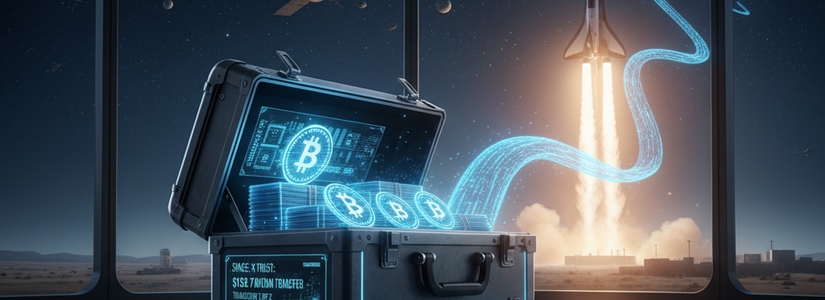TL;DR:
- SpaceX moved $133.7 million in bitcoin, its second major transfer this week.
- The company now holds about 6,970 BTC worth $770 million, per Arkham.
- Transfers likely aim to consolidate assets into newer, more secure wallets.
Elon Musk’s SpaceX has once again drawn attention from the crypto world after transferring $133.7 million in bitcoin to new wallets, marking its second major transaction in less than a week. The move, tracked by Arkham Intelligence, comes amid renewed curiosity about how Musk’s companies handle their digital assets.
Advertisement

SpaceX’s Bitcoin Shifts Raise Questions About Strategy
According to blockchain data, SpaceX conducted two major bitcoin transfers this week, totaling over $400 million. On Tuesday, the company moved around $268.5 million in BTC, its largest movement since July. Arkham reports that SpaceX currently holds about 6,970 bitcoin valued at roughly $770 million, suggesting these transactions were part of a larger asset reorganization effort rather than liquidation.
Market observers note that the transfers appear to be a consolidation effort, with the company migrating funds from older wallet addresses to newer, more secure ones. Bitcoin was trading at $110,493.92 as of 1:31 p.m. ET, reflecting a steady market performance as institutional movements like this continue to attract attention from analysts tracking on-chain activity.
The decision mirrors a broader pattern in Musk’s companies when it comes to managing crypto exposure. In mid-2022, SpaceX reportedly cut its bitcoin holdings by around 70% after the Terra-Luna collapse and FTX’s implosion sent shockwaves across the market. Arkham data indicates SpaceX has not added to its bitcoin reserves since that reduction.
Tesla, another Musk-led firm, has followed a similar path. The automaker sold most of its bitcoin holdings in 2022 and now retains 11,509 BTC worth $1.24 billion, according to Arkham. While both companies maintain significant exposure to bitcoin, their recent movements suggest a focus on security and portfolio consolidation, not accumulation or disposal.
With two major transactions in one week, SpaceX’s activity underscores how large corporate holders continue to adapt their crypto custody practices in a rapidly evolving digital landscape.
Advertisement

Images are for reference only.Images and contents gathered automatic from google or 3rd party sources.All rights on the images and contents are with their legal original owners.

